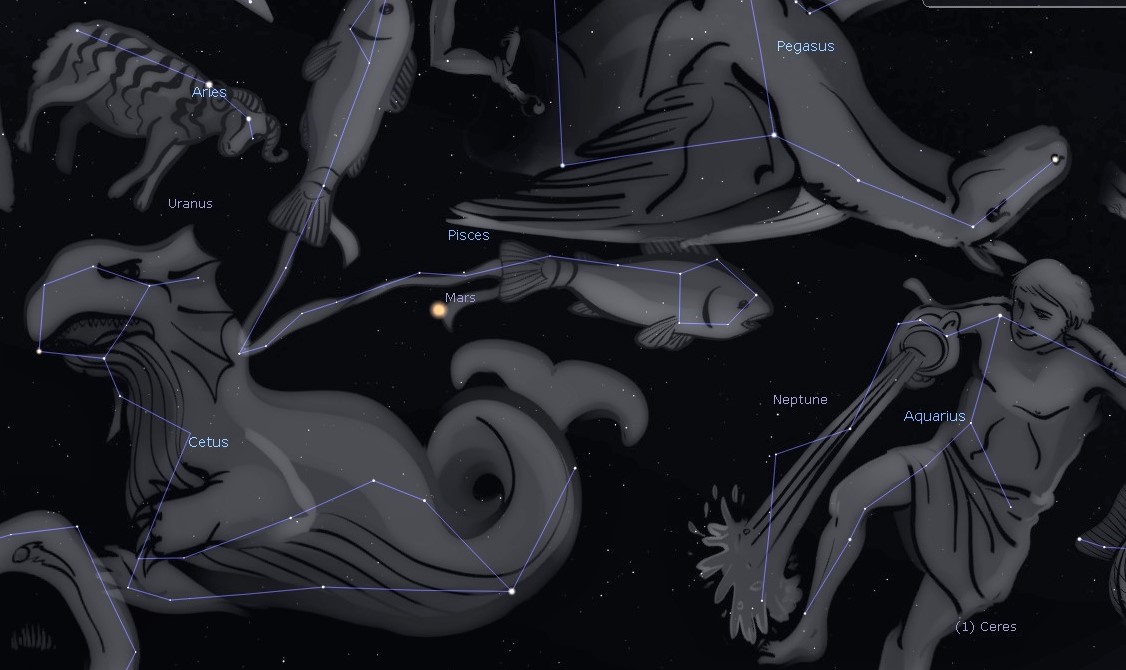This Week’s Sky at a Glance, 2020 November 7 – 14
~by Curt Nason
One way to maintain interest in stargazing is to set observing goals, and it helps to maintain a log of your activities. One of my annual goals is to see all eight planets in one night or calendar day; usually when faint Uranus and Neptune are in the evening sky and Mercury is far enough from the Sun. All can be seen with binoculars, and the next two weeks are optimal for this challenge.
Starting in the evening, Jupiter and Mars are hard to miss as they are bright, and slightly dimmer Saturn is within the same field of view as Jupiter for most binoculars. Since they are easy naked-eye objects, try to see what detail you can discern, if any, with binoculars. While you are at it, take in some local scenery so you can claim to have observed Earth. Neptune and Uranus are tougher and you will require a detailed map to distinguish them from stars. I use one from the Sky & Telescope website.
You might notice these planets do not twinkle like stars, and there might even be a hint of blue or green colour. Observing them with a telescope at high magnification will reveal them as a tiny discs rather than pinpoints of light. You will have to wait for morning to get the final two planets in the east-southeast. Venus is a can’t-miss, being the brightest planet, and now Mercury is at its morning best to the lower left. I recommend trying at least an hour before sunrise.
How about an extra challenge: a dwarf planet. When Pluto was reclassified in 2006, the largest asteroid, Ceres, also fit the requirements for dwarf planet status. It will look like a dim star among others brighter and dimmer, but by using binoculars and the Ceres map under Asteroids on the Heavens-Above website you might be able to pick it out. The reward for completing or even attempting this challenge is the best reward of all: A night under the stars.
This Week in the Solar System
Saturday’s sunrise in Moncton is at 7:09 am and sunset will occur at 4:55 pm, giving 9 hours, 46 minutes of daylight (7:12 am and 5:03 pm in Saint John). Next Saturday the Sun will rise at 7:19 am and set at 4:47 pm, giving 9 hours, 28 minutes of daylight (7:21 am and 4:55 pm in Saint John).
The Moon is at third quarter on Sunday, and it will be about 7 degrees above Venus on Thursday morning and the same distance above Mercury on Friday. Jupiter and Saturn are in good position for early evening observing, while Mars gives good views through a telescope for most of the night. Mercury is in its best morning apparition for the year, shining about 12 degrees to the lower left of Venus. The North Taurid meteor shower might add of few shooting stars for viewers over Wednesday night to Thursday morning.
With astronomy meetings and outreach activities on hold, you can watch the local Sunday Night Astronomy Show at 8 pm and view archived shows.
Questions? Contact Curt Nason.

